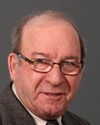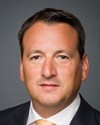Let me first acknowledge that.... We have to remember than when non-aboriginal people came to North America, what they found was a people who were proud, who were very strong, who were very self-reliant. These were not a people who were cowed in any way. Our goal has to always be to see them return to that and for them to be the ones leading it.
I think that's where the challenge lies to the greatest extent. I can only speak to British Columbia, but I think what we have learned is that traditional approaches, where we simply create dependence on systems such as welfare, do not provide the kind of inner confidence and identity and community development that needs to happen. There needs to be investment in the kind of infrastructure and support that truly is community development.
We often talk about programs, not that there is anything wrong with a program—that's how governments function. But we need to be thinking about our design of programs and our design of funding in a community development model, not in a welfare-social assistance type of model. I think therein lies the source of the problem you've described: young people who don't feel they have hope to achieve what their neighbours in non-aboriginal communities may wish to achieve.
That means we need to build up those young people and build up their leadership capacity. If we want long-term change, we have to remember how large a population of our aboriginal folks are young people and recognize that it's that generation who will be the future leaders. If you think about someone like a Shawn Atleo, it becomes clear to you just how much positive influence one person can have when he or she is a leader with significant capacity. It can cause so much positive change.





